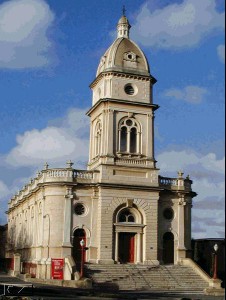A HISTORY FLASHBACK –
FROM NORTH ADELAIDE TO PARAGUAY
Towards the end of the nineteenth century, a group of Australians began a settlement in the South American country of Paraguay in order to fulfil their utopian dream of a perfect society. Those involved believed Australia was beyond redemption, and so they were setting about the creation of a “New Australia”. In 2006 the ABC TV programme “Foreign Correspondent” (26-9-06) included a segment on this “communistic” experiment as the noted poet, Dame Mary Gilmore, called it. She herself had been a young teacher for the children of the settlement. In 2006 the ABC reporter paid a visit to the area to see if anything of this bold venture remained.
He spoke to descendants of the Wood family at their annual reunion. Over the years there had been a great deal of intermarriage with the Indian and Spanish people of Paraguay, but there were still strong traces of Australian culture and loyalties remaining. Many of these descendants still lived on and worked the land that had originally been granted to the Australians. The TV reporter described it as a “slice of Australia in Paraguay from an Australia that no longer exists”.
While people from many parts of Australia were attracted to the “New Australia” movement, it is interesting to recall that there were also people who went from the Wellington Square Primitive Methodist Church and Brougham Place Congregational Church, North Adelaide to the settlement in Paraguay.
George and Helen Birks from Adelaide joined the second contingent to leave Australia in December, 1893. George Napier Birks, a 55-year-old homeopathic chemist, and his wife Helen, had decided to join their two adult sons in Paraguay. As members of the North Adelaide Primitive Methodist Church they had been greatly influenced during the ministry of the Rev Hugh Gilmore to consider seriously the implementation of Christian socialism. Unfortunately George Birks was already a sick man when he started out on this venture. As a result he was able to contribute very little to his new community, and after a long illness he died in Paraguay in September, 1895.
His widow, Helen, and some other members of the family returned to Adelaide. Others remained at the New Australia settlement. A descendant, Oscar Birks, was an influential businessman in Paraguay during 1997, so it could be likely there are Birks descendants still in that country.
John Sibbald and his wife were members of the Brougham Place Congregational Church (now Uniting C hurch), North Adelaide – pictured left. John was an accountant, and quite prominent in the church’s activities. Perhaps this couple were like the Birks and wanted to find expression for their Christian socialism. The minister at the Brougham Place church was the Rev Fred Hastings (1889-1893). After resigning from that position, Hastings took a trip to Paraguay, where he stayed for a while with the Sibbalds. During his time at the settlement. Hastings conducted at least one service of worship and baptised a couple of children. This was unusual, because the New Australian settlements were to be completely secular. It is not clear where Hastings went after this visit; perhaps returned to England.
hurch), North Adelaide – pictured left. John was an accountant, and quite prominent in the church’s activities. Perhaps this couple were like the Birks and wanted to find expression for their Christian socialism. The minister at the Brougham Place church was the Rev Fred Hastings (1889-1893). After resigning from that position, Hastings took a trip to Paraguay, where he stayed for a while with the Sibbalds. During his time at the settlement. Hastings conducted at least one service of worship and baptised a couple of children. This was unusual, because the New Australian settlements were to be completely secular. It is not clear where Hastings went after this visit; perhaps returned to England.
There were other church-related Adelaide people who went to Paraguay. Some returned to Adelaide and others went to other countries. One of Hugh Gilmore’s sons, Joe, who had been a lay travelling preacher at Morgan SA, was a deck-hand on the barque Royal Tar, the boat that took the people to Paraguay. Probably he also stayed at the New Australia settlement for a while. He apparently did not return to Adelaide.
In the 1990s, Anne Whitehead retraced the journey of the idealistic Australians and wrote of them and her experiences, in Paradise Mislaid: In Search of the Australian Tribe of Paraguay.(1997) She was present when a memorial plaque, written in Spanish, was unveiled at the Municipal Theatre in the Paraguayan city of Asuncion. It reads:
23 AUGUST 1883 – 23 AUGUST 1993
“To commemorate the centenary of the arrival of a large contingent of Australians to settle in this country, the descendants wish to honour and record their arrival at this theatre which served as their first refuge. In a quest for a more just society they crossed oceans and confronted many difficulties.”
This was signed by the Mayor of Asuncion and the Australian Ambassador to Paraguay.
Whitehead comments, “As the colonists actually arrived on 22 September, 1893, the plaque, cast by a firm in Melbourne, was out by one day, one month and a whole decade.” She adds, “But errors set in bronze have a way of becoming history” (p164).1.
Would-be historians please note!
1. Whitehead, Anne, Paradise Mislaid: In Search of the Australian Tribe of Paraguay, (St Lucia, Queensland, University of Queensland Press,1997).
Kevin Secomb
This article was originally published in the Historical Society’s Newsletter No. 90 (Oct.2006). The Rev Kevin Secomb was Editor of the Newsletter from 2001-2008.
